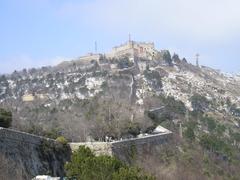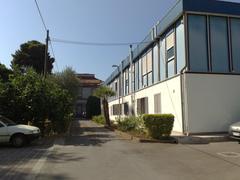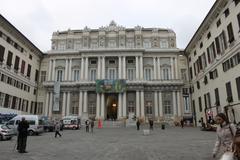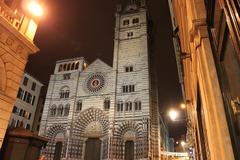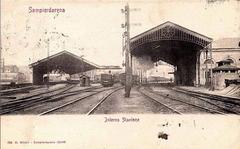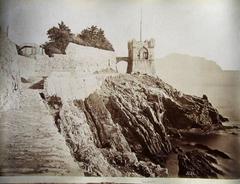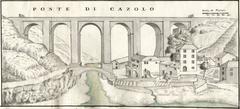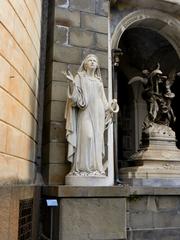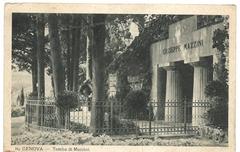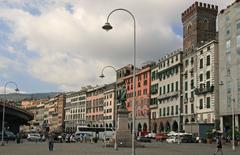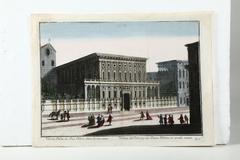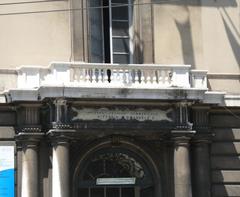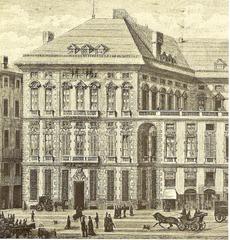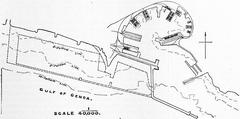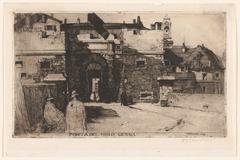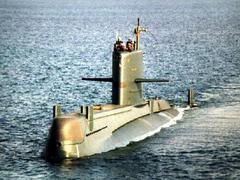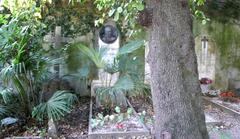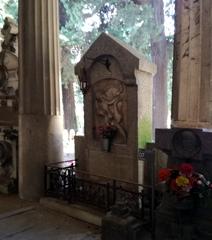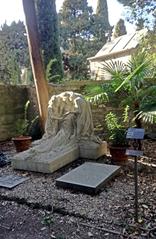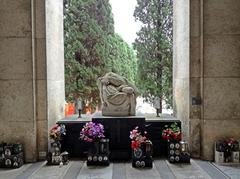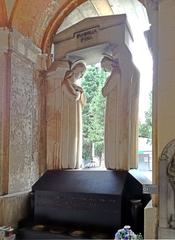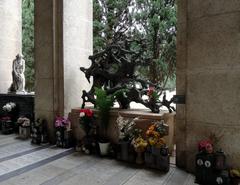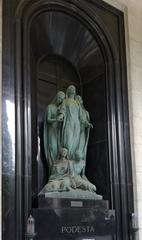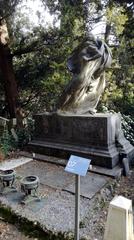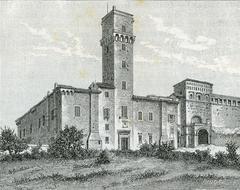
Guide to Visiting Forte Sperone in Genoa
Publication Date: 23/07/2024
Overview of Forte Sperone
Forte Sperone, an iconic historical fortress perched on the heights of Genoa, Italy, is a marvel of military architecture and a testament to the city’s rich history. With origins tracing back to the 14th century, Forte Sperone has played a crucial role in various historical conflicts and undergone numerous modifications to adapt to changing military technologies. This guide aims to provide visitors with comprehensive insights into the fortress’s storied past, practical visitor information, and travel tips to enhance their experience. Whether you are a history enthusiast, a casual traveler, or someone looking to explore Genoa’s cultural heritage, Forte Sperone offers a unique and enriching experience. The fortress’s strategic position on Righi hill not only made it a formidable defensive structure but also offers panoramic views of Genoa and the Ligurian Sea, making it a must-visit site for anyone exploring the city (Visit Genoa).
Contents
- Introduction
- History of Forte Sperone
- Visitor Information
- Travel Tips
- Nearby Attractions
- Accessibility
- FAQs
- Conclusion
Exploring Forte Sperone - History, Visiting Hours, and Tickets for Genoa’s Iconic Fortress
Introduction
Forte Sperone, located in Genoa, Italy, is a prominent example of military architecture with a rich history dating back to the 14th century. This article explores the historical significance of Forte Sperone while providing practical visitor information, including visiting hours, ticket prices, and travel tips.
History of Forte Sperone
Origins and Early Construction
Forte Sperone’s initial construction began in 1319, during a period of intense conflict between the Guelphs and Ghibellines. The fort was strategically positioned on the Righi hill, providing a vantage point over the city and surrounding areas (Forte Sperone History).
Expansion in the 16th Century
In the 16th century, the fort was expanded during the rule of the Republic of Genoa to bolster the city’s defenses against potential invasions from the French and Spanish (Genoa Republic).
17th and 18th Century Modifications
The fort saw further modifications in the 17th and 18th centuries to adapt to advancements in military technology. During the War of the Mantuan Succession in 1625, it played a crucial role in defending Genoa (War of the Mantuan Succession).
Napoleonic Era and the 19th Century
In 1800, during the Siege of Genoa, French forces under General André Masséna occupied the fort. After Napoleon’s fall, it was integrated into the Kingdom of Sardinia’s defensive network in 1815 (Siege of Genoa).
Role in the Risorgimento
Forte Sperone played a notable role during the Italian unification movement, known as the Risorgimento. In 1849, it was a focal point during the Genoese uprising against the Piedmontese government (Risorgimento).
20th Century and World Wars
In the 20th century, the fort served as a military prison during World War I and a defensive position during World War II (World War I, World War II).
Post-War Period and Restoration
After World War II, Forte Sperone fell into neglect but was later restored by Genoese authorities in the late 20th century. Today, it stands as a testament to Genoa’s rich military history and is a popular tourist attraction (Forte Sperone Restoration).
Modern-Day Significance
Now a cultural and historical site, Forte Sperone hosts various events, exhibitions, and guided tours, offering panoramic views of Genoa (Visit Genoa).
Visitor Information
Visiting Hours
Forte Sperone is open to visitors from 10 AM to 6 PM on weekdays and from 10 AM to 8 PM on weekends. Check the official website for any seasonal changes.
Ticket Prices
General admission tickets cost €10 for adults, €5 for children aged 6-12, and free for children under 6. Discounts are available for groups and seniors.
Guided Tours
Guided tours are available in multiple languages and provide an in-depth exploration of the fort’s history and architecture. Tours can be booked online or at the entrance.
Travel Tips
- Best Time to Visit - Spring and autumn are ideal for visiting due to the pleasant weather.
- How to Get There - The fort is accessible by public transportation with buses running from Genoa city center.
- What to Bring - Comfortable shoes, water, and a camera for the stunning views.
Nearby Attractions
- Staglieno Cemetery - Known for its monumental sculptures and graves.
- Genoa Cathedral - A stunning example of Gothic-Romanesque architecture.
- Porto Antico - The old port area with shops, restaurants, and museums.
Accessibility
Forte Sperone has made efforts to be accessible to visitors with disabilities. There are ramps and accessible pathways, though some areas may still be challenging due to the historical architecture.
FAQs
- What are the visiting hours for Forte Sperone? Visiting hours are from 10 AM to 6 PM on weekdays and from 10 AM to 8 PM on weekends.
- How much are the tickets for Forte Sperone? Tickets cost €10 for adults, €5 for children aged 6-12, and are free for children under 6.
- Is Forte Sperone accessible for people with disabilities? Yes, there are ramps and accessible pathways, though some areas might be challenging.
Conclusion
Forte Sperone’s rich history and architectural marvels make it a must-visit site in Genoa. Whether you’re a history enthusiast or a casual visitor, exploring this iconic fortress offers a unique glimpse into Genoa’s storied past (Forte Sperone).
Visit our website for more information and stay up to date with upcoming events and tours.
Summary and Key Points
In conclusion, Forte Sperone stands as a remarkable testament to Genoa’s military and cultural history. From its initial construction in the 14th century to its role in significant historical conflicts like the War of the Mantuan Succession, the Napoleonic Wars, and the Risorgimento, the fortress has been an integral part of Genoa’s defense system. Today, it serves as a cultural and educational hub, offering visitors a glimpse into the past through guided tours, historical exhibits, and various cultural events. The fortress’s strategic location provides stunning views of the city and the surrounding landscape, making it a popular destination for both locals and tourists. By following the practical tips and visitor information provided in this guide, you can ensure a safe, enjoyable, and memorable visit to Forte Sperone. For the latest updates on visiting hours, ticket prices, and special events, be sure to check the official Visit Genoa and Parco delle Mura websites.
Sources and Further Reading
- Exploring Forte Sperone - History, Visiting Hours, and Tickets for Genoa’s Iconic Fortress, 2023, Visit Genoa source
- Genoa Republic, 2023, Britannica source
- War of the Mantuan Succession, 2023, History of War source
- The Siege of Genoa, 2023, Napoleon.org source
- Risorgimento, 2023, Britannica source
- World War I, 2023, History source
- World War II, 2023, History source
- Forte Sperone Restoration, 2023, Visit Genoa source
- Genoa Fortifications, 2023, Italy This Way source
- Architectural Details, 2023, Forti di Genova source
- Restoration Projects, 2023, Genova Post source
- Guided Tours, 2023, Visit Genoa source
- Cultural Events, 2023, Genova Fortificata source
- Transportation Options, 2023, Visit Genoa source
- Best Visiting Times, 2023, Weather source
- Visitor Recommendations, 2023, TripAdvisor source
- Opening Hours, 2023, Visit Genoa source
- Visitor Facilities, 2023, Genova Fortificata source
- Safety Guidelines, 2023, Visit Genoa source
